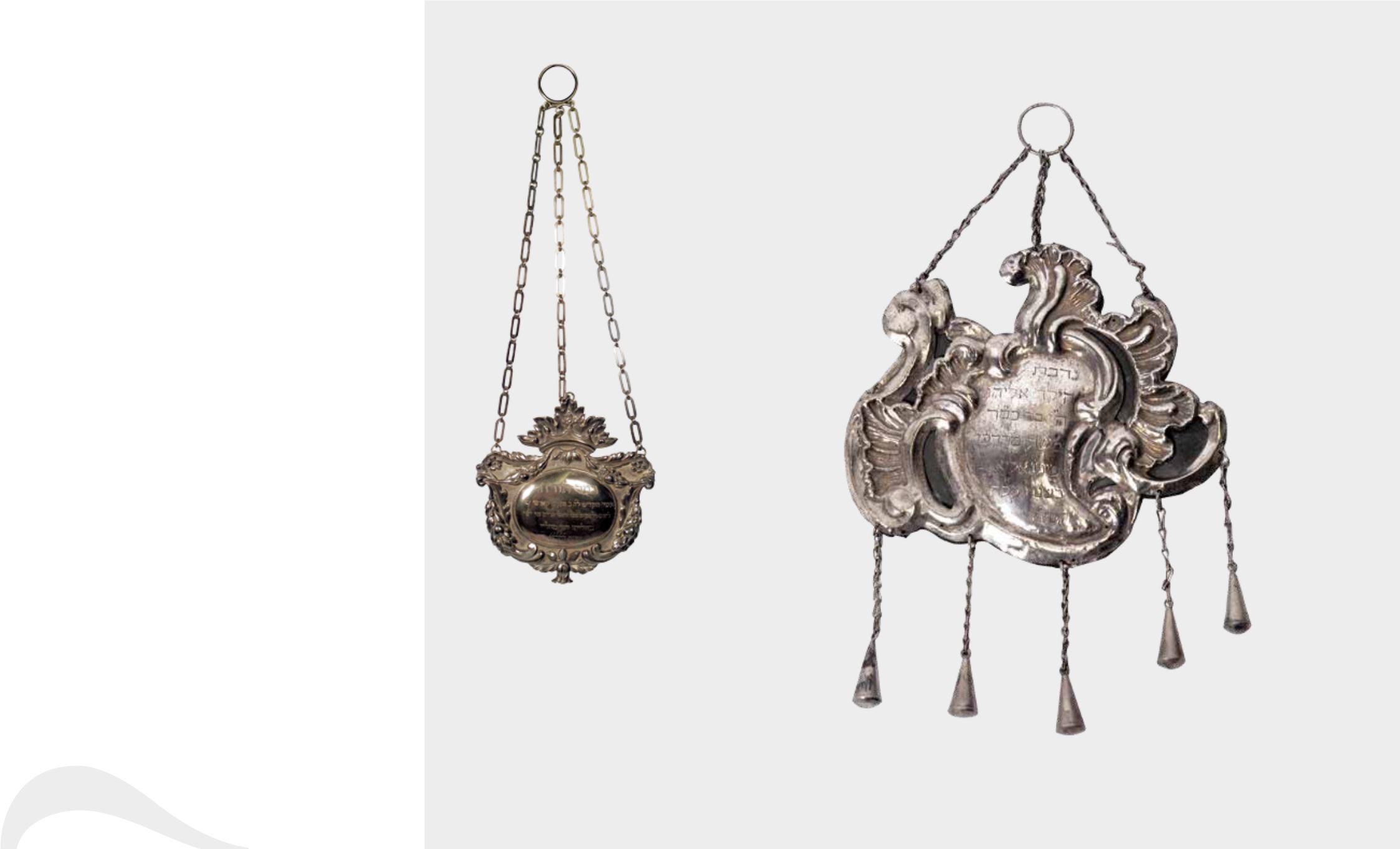
The
Sifrei Torah
(plural of the Hebrew word
sefer
) were often fit with a silver breastplate
called a
tas.
The spread of these objects probably dates
to the 16th century and hails from the
Ashkenazi areas of northeastern Europe.
Since the community owned more than one
Torah — indeed, the greater the number
of
Sifrei Torah
a community owned, the
greater its economic and cultural wealth
— and different scrolls were opened
and read during different holy days, the
breastplates bore an inscription indicating
the occasion on which the book was to
be read. Some objects also have a small
interspace where, if necessary, the name of
the current festival could be inserted. Some
breastplates bear an inscription indicating
when the scroll is to be read, others have a
dedication bearing the name of the donor.
Tas
Tas
, around XVIII century, Italy,
embossed, punched, engraved
silver, with decorative plant motif
and dedicatory inscription,
16 x 16 cm
Tas
, around XVIII century, Italy,
embossed, punched, engraved
silver, asymmetrical rococo style
plate with 5 bells and dedicatory
inscription, 15.5 x 18 cm
18
19


